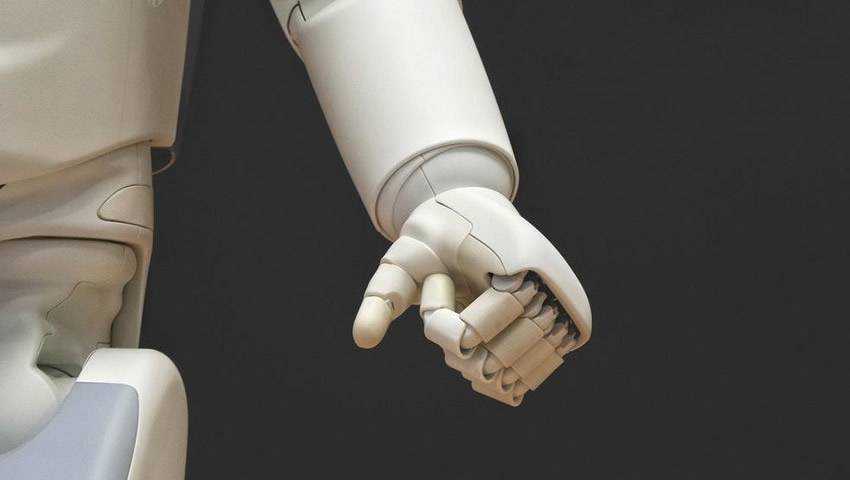AI products have started entering our era quicker than we could imagine. Artificial intelligence has found its place in different industries. From spam filters to autopilots in aeroplanes – AI surrounds us and impacts even the most unexpected areas of our lives.
UI/UX design is not an exception. Entering this industry has given birth to the concept of Artificial Intelligence Design.
Wired magazine calls AI-Driven Design, while others name it ‘Algorithm-Driven Design.’ However, there are also those who call it ‘Design Intelligence.’ Despite its numerous names, essentially, it means the same – non-human intelligence capable of generating creative results that seem genuine to the human eye.
“Surrounded by misconceptions and questions regarding its purpose and power, apart from its known ethical and philosophical challenges, AI can be the catalyst for great user experiences” – Joël van Bodegraven, Product Designer at Adyen.

Indeed, AI continues to open new opportunities for us as creators. AI-driven user experiences and interfaces are the future, knocking on our doors today. However, we’re still very early on.
According to Tim Urban, there are three levels of artificial development:
- Artificial Narrow Intelligence. The concept means that AI development is at the level where it’s not able to perform highly complicated tasks related to a creative UX job, for example.
- Artificial General Intelligence. At least, this level should be reached in order we could make machines do more creative tasks. Here, artificial intelligence = human intelligence.
- Artificial Super-intelligence. At this level, artificial intelligence is even “smarter” than any human intellect.
Here’s a trick question. What will happen when AI reaches the third level of its development? Will it be a harmonious human-machine interaction making it easier for us to create exciting and even emotionally intelligent user experiences? Or will people lose their jobs simply because machines will replace them? Everyone would prefer the first option, however, at this stage, it’s anyone’s guess.
Is artificial intelligence a friend or foe to designers?
We’re not saying that a machine will become self-aware and realize that humans stand in its way like Skynet from the Terminator movie. However, it’s not so crazy to say that many AI may steal UI/UX design jobs in the future. There are two sides of the coin when discussing why AI is a friend or foe to designers.
AI is a Friend. It’s the beginning of a new era
AI systems can create a deeper connection between brands and their audiences, enhancing their relationship. Artificial intelligence can help us collect and analyze a vast amount of data to design the products that are able to satisfy human needs and wants.
Artificial intelligence is changing the way consumers and companies think about user experiences. AI offers more innovative insights, more intimate engagement, more specific contexts, faster processing, and more intuitive interfaces. AI personalizes user interfaces to be targeted at the individual’s preferences, challenges conventional interactions, and adds new channels such as voice.
AI is a Foe. The end is near
Robots will be stealing a portion of jobs currently occupied by humans. How is artificial intelligence going to affect design and app development careers in the long term?
Robots are not replacing designers and mobile app developers, at least not in the near future. Or, maybe, do you know how to convince 7 billion humans to trust a decision made by an algorithm? Well, no one does.
Humans have a unique ability to set the context for our design and create empathy for other users.
- Mobile app designers don’t decide whether an app’s menu should be exposed or hidden under a hamburger icon simply based on the number of items it contains.
- Web designers don’t decide whether they’re creating a 2 or 3-column grid on a website solely because of the size and amount of displayed images.
- And, surely, most designers don’t decide the font color based on a “color psychology bible”.

AI may help deliver the UX we’ve been waiting for
At its heart, AI-driven design is a new level of relationship between AI and customer experience. Machine learning-based user experiences are incredible playgrounds for UX designers. They are challenging both technology and people and promises to move UX design to a new level of digital experience.
Imagine AI behind the scenes of UX design. It can help enhance user experience by delivering automatic and intuitive responses to user requests. AI has the ability to create numerous design variations that respond to users quickly. Utilizing the information derived to revise user behaviors, AI-based algorithms can simplify the process of improvised user experience.
The benefits of AI go even deeper. If we use AI in UX design more often, it’ll free up more “headspace” and prevent the user from being overwhelmed with voice commands, gestures or buttons.
According to the results of a recent survey conducted by Adobe, 62% of designers are interested in artificial intelligence and the benefits it can add to the creative process. AI and machine learning promise to make a “democratizing effect on creativity” in applications and products.
AI as the new UI. How does machine learning help create a smarter design?
UI design is still paving its way into a world where AI and the future of design is much better connected than now.
Designer and developer communities have started taking AI user experience together in their journey to creating unique mobile applications. So, it seems AI has become one of design and mobile app development trends gaining popularity in 2019.
Designers have started to make designs localized by taking the help of AI-based translation. Artificial intelligence helps also get insights into which elements users are interacting with, which needs attention.
Now, the work of image resizing and color adjustment can be done by robots, which increase the designers’ productivity a lot.
A great example of AI-driven UI is technology announced by Airbnb. It can identify the design sketches and then convert them into coding in real time. In this way, designers will have more time for the strategic decisions of the product, and this is something that computers will take at least a decade to learn.
All in All
AI can help us automate repetitive tasks and free up the time to focus on the more strategic side of design. Undoubtedly, artificial intelligence and machine learning help us to design experiences that are more personalized, relevant, smart and efficient for people.
It’s time we started identifying these opportunities to work with technology – not against it, not afraid of it.
Related Topics
Top